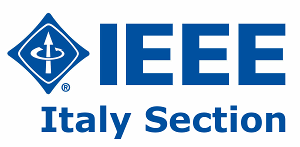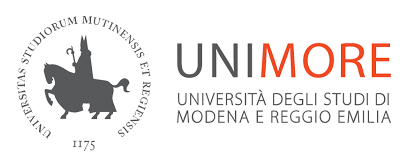Smart Mobility: Technical sessions
Session 1.1: IoT and Mobile Applications for Smart City
Chairs:
| Keywords | Topics |
|---|---|
|
|
Smart cities can be considered complex digital ecosystems, where the recent advances on Information and Communication technologies (ICT) foster new applications and services for citizens and industries. The Internet of Things (IoT) is one of the main enabler of the smart city, since it provides the technologies to sense the environment, to connect physical devices and to gather data all over the scenario. Similarly, several mobile applications have been deployed today in order to visual such data, to implement crowd-sensing techniques, and to translate the gathered (big) data into ICT services that can be accessed pervasively. This technical session aims to bring together researchers and practitioners interested in discussing and presenting the most recent research activities in the field of mobile and IoT applications which can result into novel services for citizens and industries in next smart cities. |
Session 1.2: Advanced remote sensing methods for a smarter and safer world
Chairs:
| Keywords | Topics |
|---|---|
|
|
Remote sensing instruments - equipped on board of satellites, space shuttles, aircrafts, drones, etc., and operating at optic, infrared and microwave frequencies – provide routinely an unprecedented amount of information about the observed scene. Availability of such information can be exploited to boost data-driven environment control and management, aimed at sustainability, transparency and efficiency. This special session aims at stimulating discussions on models and methods that allow an intelligent processing of remotely sensed measurements to generate added-value products in the context of: smart city, smart agriculture, smart mobility, hazard monitoring, water management, archeology and heritage, etc. Expected contributions will focus on all aspects of remote sensing: developing of new sensors (multispectral and hyperspectral, infrared thermal cameras, synthetic aperture radars, radiometers, and so on), new missions or new acquisition configurations; methods and tools for the processing of remotely sensed data; electromagnetic scattering models and inversion techniques; methods and techniques for the extraction of the desired information from remotely sensed data. A wide spectrum of applications can be covered: land (forests, agriculture, environment, wetlands, soil moisture, terrestrial transportation infrastructures, urban areas, archeological sites, etc.), ocean (pollution monitoring, ship detection, sea state retrieval, salinity, currents, etc.), cryosphere (snow, land ice and sea ice, etc.), atmosphere (meteorology, water vapor content, ionosphere, etc.), hazards (fire monitoring, volcanoes, flooding, earthquakes, landslides, etc.). A particular attention will be finally paid to monitoring techniques for security and smart mobility applications. |
Session 1.3: Electric and Magnetic devices for smart mobility applications
Chairs:
| Keywords | Topics |
|---|---|
|
|
Smart City is a recent research field, but it is spreading very fast, as it is considered like a winning strategy to cope with some important urban problems such as traffic, energy consumption, pollution, waste treatment. Smart City concept merges several ancient urban policies such as green city, knowledge city, digital city. Thus, a Smart City is a complex vision of a better urban area, aiming at reducing its environmental footprint and at creating better quality of life for citizens. In this contest, mobility is one of the most difficult challange to face in metropolitan large areas. Indeed, half of the global population lives in cities. Cities currently add 1.4 million people each week and this population growth comes with new buildings, roads and transport systems. Improved public transport systems can help connect urban areas while realizing multimodal-shift with reduced energy and cost, while satisfying the needs of the public transportation users and providing advanced management tools for urban transportation management. The smart mobility is a new research field involving both environmental and economic aspects, and needs both high technologies and aware people behaviours. It is not a unique initiative, but a complex set of projects and actions, different in goals, contents and technology intensity. Urban transport is responsible for about a quarter of CO2 emissions from transport. The gradual removal of ‘conventionally-fuelled’ vehicles from the urban environment is the main contribution to significant reduction of oil dependence for a better quality of local air and a a lower noise pollution. Fully Electric Vehicles (FEV), for public and private transport, can contribute significantly to the lowering of the current pollution levels. However, the FEV use is currently facing several weaknesses which are delaying its deployment, mainly related to overall limited efficiency and limited driving range. This transition to smart, sustainable mobility requires both local innovation and global knowledge exchange to find the right solutions. While action for a more sustainable urban future begins at the city level, the global community can foster the ambition of city leaders by building consensus on the path forward for sustainable cities and urban mobility. The requirements of high performances for magnetic materials and devices are increasing in the field of smart mobility and new magnetic materials and applications have been introduced during the recent years such as: energy recovery and production systems, sensors, lighting, driver assistance systems, in-car safety systems, enforcement systems (such as camera supervision and monitoring), incident management, Artificial Intelligence applications and so on. Advanced experimental characterization, mathematical and numerical modelling of these new technologies are needed. Thus, the aim of this Technical Session is to encourage exchange experiences and knowledge between researchers active on these scientific aspects. |
Session 1.4: Human-Machine Interaction in Automotive
Chairs:
| Keywords | Topics |
|---|---|
|
|
Research in autonomous or semi-autonomous vehicles cannot neglect or overcome the human factor: the analysis of the driver behavior is a crucial issue both for safety purposes and for an effective Human-Machine Interaction. To this aim, a combination of many sensors ranging from IoT devices to visual and cameras can be exploited and processed using state-of-the art techniques of computer vision, pattern recognition, signal processing together with machine learning solutions. The section seeks submissions from both academia and industry presenting new researches on computer vision and sensors data analysis as well as industrial applications and projects on automotive. |
Session 1.5: Smart mobility challenges: vehicle, technology and infrastructure
Chairs:
| Keywords | Topics |
|---|---|
|
|
Nowadays the theme of smart mobility is experiencing a new dimension. On the one hand, the thrusts to make mobility increasingly shared and free from the concept of ownership. On the other hand, the need for new transport systems with low impact and high sustainability. All this requires the development of an ecosystem that passes through technologies, infrastructures and vehicles. In this session we want to focus on these three aspects, trying to open a heartfelt and intelligent debate on how to interact these different thrusts. |
Session 1.6: Will smart vehicles work without sensors and electronics?
Chairs:
| Keywords | Topics |
|---|---|
|
|
In a smart world, smart vehicles will move in smart cities and connect with smart infrastructure. Inside the vehicle, smart interfaces will interact with a "possibly smart" driver and/or passenger. Interaction is based on the exchange of information, that need to be transduced into signals, and on signals, that need to be transduced into information, that a human operator can see, hear, feel, understand. Sensors and electronic devices and circuits (integrated circuits, front-end boards, radars, LED, tactile engines, light engines, MEMS, loudspeakers and microphones) are driving and enabling any possible implementation of this revolution. In this session we want to focus on the new "hardware" that can be used in a smart vehicles and exchange experience and knowledge between researchers and industries. |


